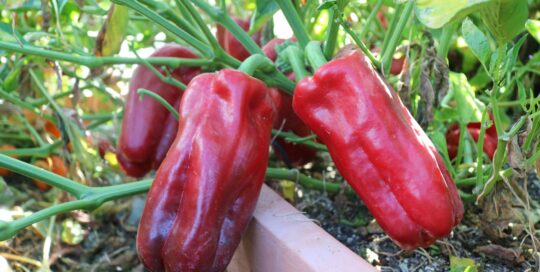Growing Salad Greens for Early Spring
Views: 484

I joke that stones are my garden plot’s first harvest each spring, but in reality “stone soup” is displaced on my spring menu by tender shoots of herbs, lettuces and spinach. Casually throwing seeds of lettuces, herbs and tender greens into the soil as I do a final fall garden raking gives me a crop of harvestable salad as early as late March here in New England. I’m also lucky in that many of herbs I grew the previous year reseed themselves or survive the winter (mulched, of course).
The National Garden Bureau (NGB) reminds me that Salad Greens are its pick as the Edible Plant for 2022. And I also just remembered that I did not layer in a sprinkling of salad greens seeds last fall.
Tips for Growing Early Spring Salad Greens
Am I too late for producing that first real garden crop? No, not at all. Late February is a fine time to get some salad seeds in the ground. Here are some additional tips that NGB has provided for success in the garden with salad greens:
- Greens both tender and hardy do prefer temperatures between 50-70F. Many places in the U.S. has that temperature range during late February/early March. Broadcast sowing seeds or sowing in a shallow trench while the temps are still in the 30s and 40s will ensure they are ready to burst forth once the temperatures are routinely a tad warmer.
- Plant greens in full sun. This is way easier to do when the trees haven’t begun leafing out. Sunny spots will have slightly drier soils so your seeds won’t get too wet. Plant seeds of spinach, kale and mustard greens six weeks before your area’s average last frost date, followed by the more tender-leaved lettuces and chard three weeks later. Almanac.com has a useful last frost date-finding tool HERE.
- If you want to get a jump on your harvest, you can start salad greens seeds indoors and plant those into the garden at that six- or three-week-before-last-frost-date mark.
- Consider growing salad greens in containers. I have enjoyed planting lettuces and pansies together in window boxes myself.
- Sow seeds in succession – every few weeks – so you don’t become overwhelmed with the harvest. I like to space out my plantings/sowings every two weeks—and don’t plant too many at a time!
- If a cold snap comes, use row covers to protect those more tender seedlings. Or, if you’ve planted in containers, just bring the containers into a protect area such as a shed or garage.
I’ve become pretty psyched about growing in early spring just by writing all of the above! If it’s not quite time to get the seeds in the ground, do what I am about to do—head to your local garden center or home store and peruse the seed racks for a dozen different salad greens varieties.
Thanks to National Garden Bureau for the use of the information as well as that beautiful logo!
Meet Ellen Wells
When you’re raised on a farm, you can’t help but know a thing or two about gardening. Ellen Wells is our expert on edible gardening.…
Ellen's Recent Posts

Pepper Red Impact an All-America Selections Winner






